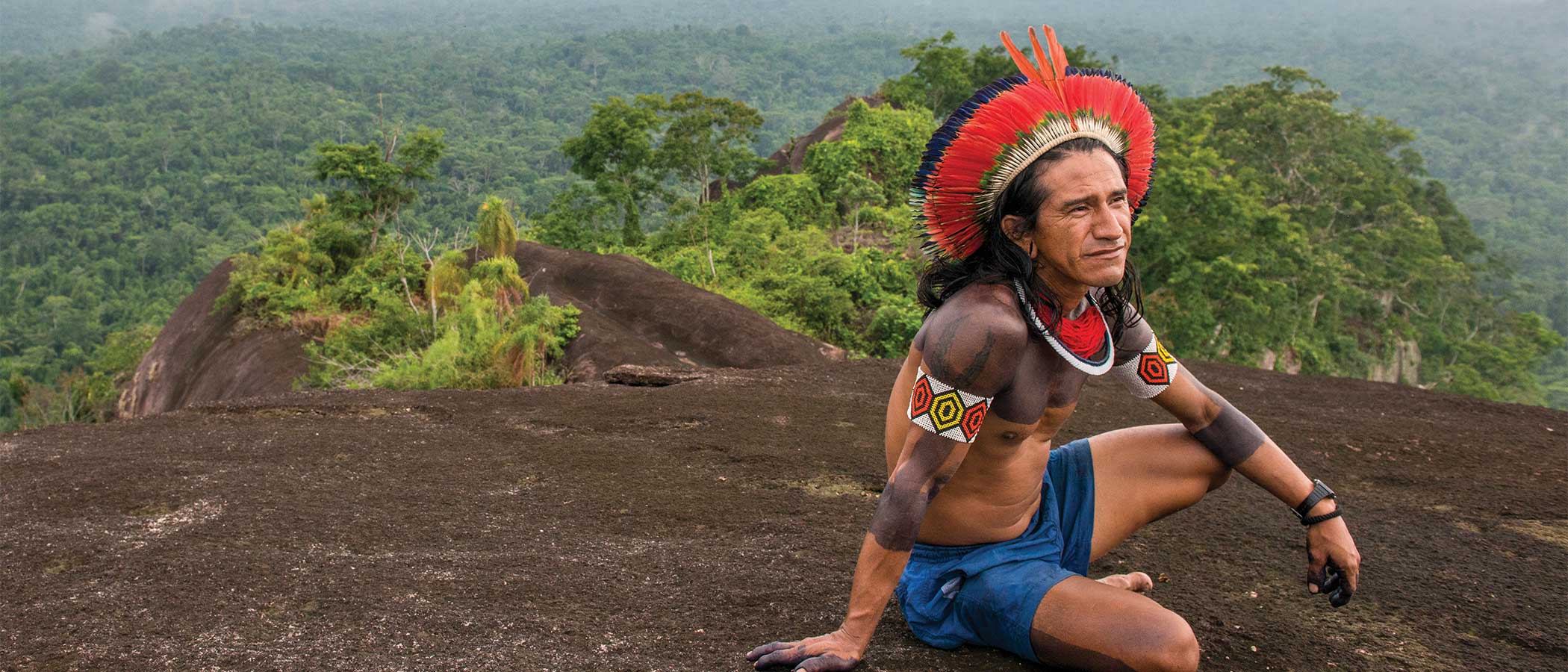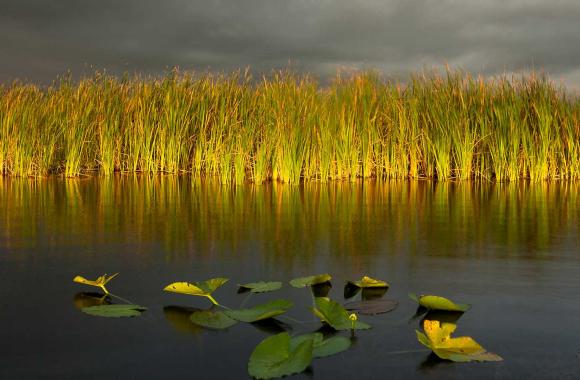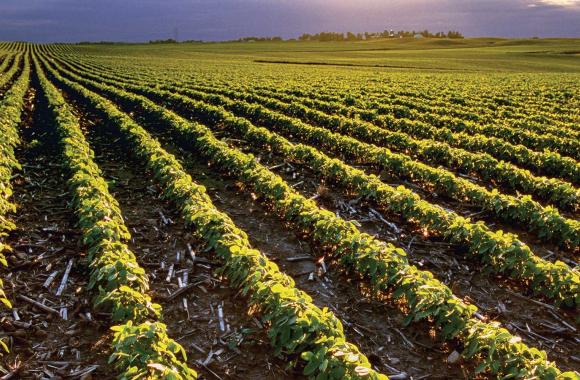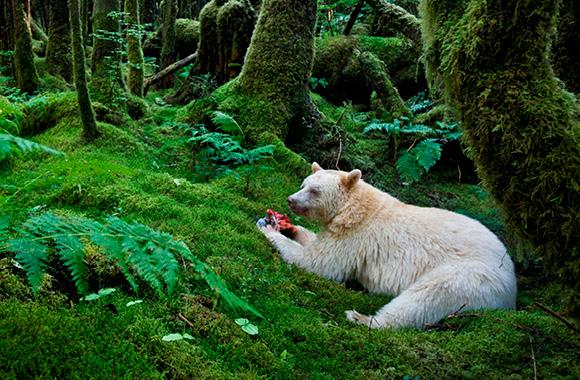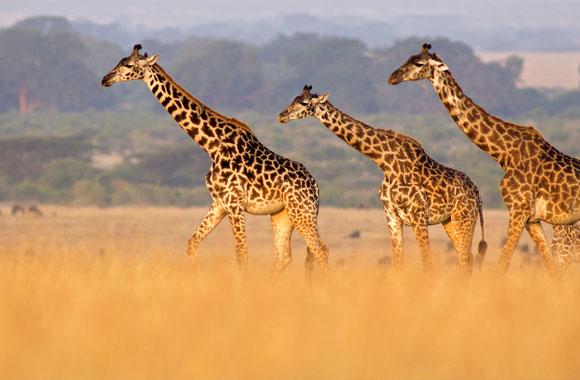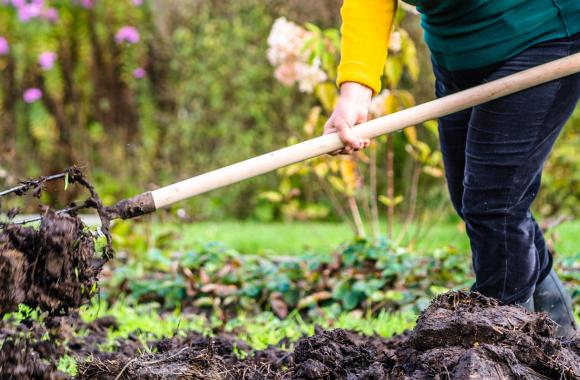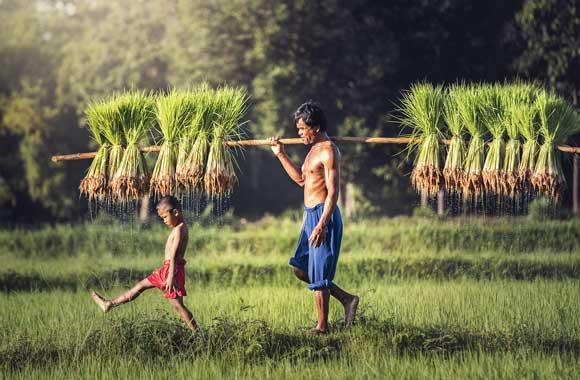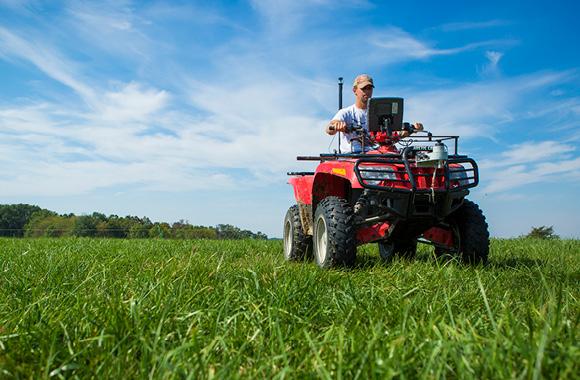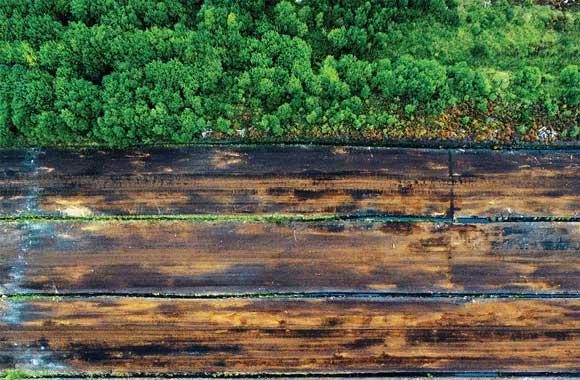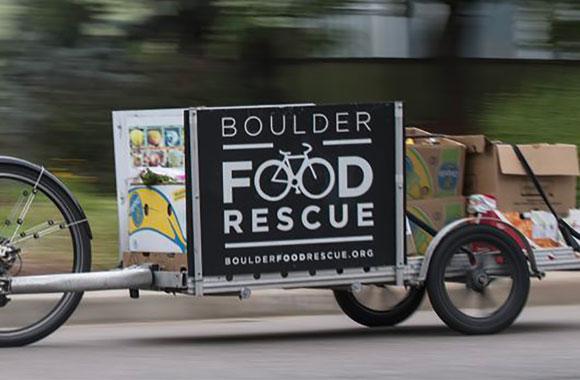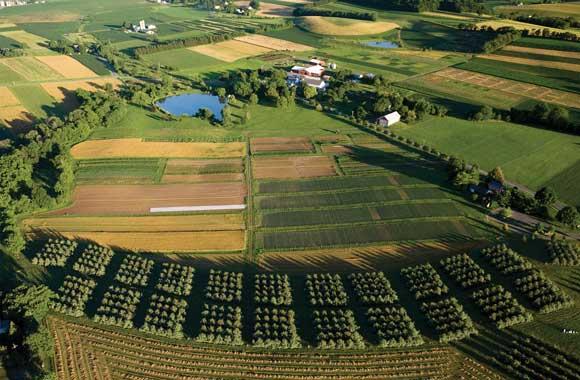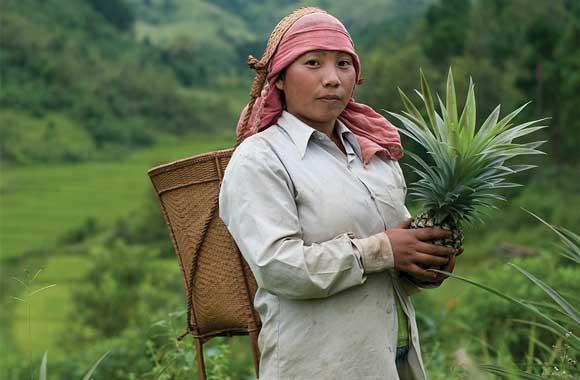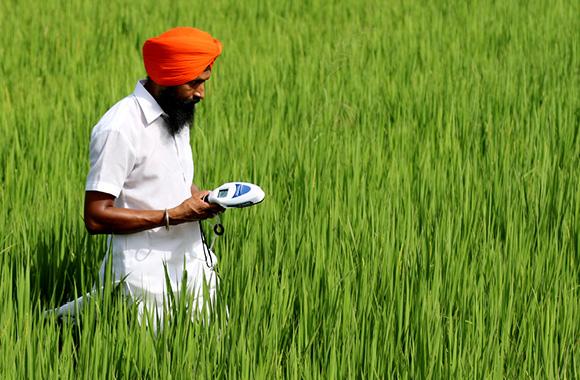Indigenous Peoples’ Forest Tenure
Secure land tenure protects Indigenous peoples’ rights. With sovereignty, traditional practices can continue—in turn protecting ecosystems and carbon sinks and preventing emissions from deforestation.
Reduced/Sequestered
2020–2050
To Implement
Impact
Indigenous peoples have secure tenure on hundreds of millions of hectares of land globally, though they live on and manage much more. If forestland under secure tenure grows by 995.46–1,126.84 million hectares by 2050, reduced deforestation could result in 8.69–12.51 gigatons of carbon dioxide equivalent emissions avoided. This solution could bring the total forest area under Indigenous management to 1.14 billion hectares, securing an estimated protected stock of 187–215 gigatons of carbon, roughly equivalent to more than 687–786 gigatons of carbon dioxide if released into the atmosphere.
Introduction
Indigenous peoples have long been the frontline of resistance against deforestation; mineral, oil, and gas extraction; and the expansion of monocrop plantations. Their resistance prevents land-based carbon emissions, and maintains or increases carbon sequestration. Increasing the amount of land under secure Indigenous land tenure can increase carbon stocks and reduce greenhouse gas emissions from deforestation.
Project Drawdown’s Indigenous Peoples’ Forest Tenure solution provides Indigenous communities with secure legal tenure rights to their traditional forestland. We use the UN’s definition of Indigenous peoples as “inheritors and practitioners of unique cultures and ways of relating to people and the environment.” This practice replaces nondegraded forest without such tenure.
Under Indigenous peoples’ forest tenure, emissions from deforestation are significantly lower than they would be if not under their tenure, with deforestation and degradation rates significantly lower than the global average. Indigenous peoples have claim to large tracts of forestland around the world, and Indigenous peoples’ legal forest tenure is on the rise.
Secure tenure that makes it possible for Indigenous peoples and local communities to manage their forestlands results in carbon benefits in the form of reduced emissions from deforestation and continued carbon sequestration. It can be seen as a form of productive forest protection, given sustainable management and utilization of forest products.
The Indigenous Peoples’ Forest Tenure solution has highly desirable human rights co-benefits, leading Project Drawdown to prioritize it for forestlands wherever possible.
Methodology
Total Land Area
To evaluate the extent to which a Food, Agriculture, and Land Use sector solution can reduce greenhouse gas emissions and sequester carbon, we need to identify the total land area available for that solution in millions of hectares. To avoid double counting, we use an integration model that allocates land area among all Food, Agriculture, and Land Use sector solutions. This involves two steps. First, we classify the global land area into agro-ecological zones (AEZs) based on the land cover, soil quality, and slope and assign AEZs to different thermal moisture regimes. We then classify the AEZs into “degraded” and “nondegraded.” Finally, we allocate the solutions to AEZs, with the solution most suited to a given AEZ or sets of AEZs assigned first, followed by the second-most-suited solution, and so on. Because it’s hard to predict future changes, we assume the total land area remains constant.
The maximum area allocated for the Indigenous Peoples’ Forest Tenure solution is 1,155 million hectares, which represents the projected future nondegraded, unprotected area available for protection. Current adoption (defined as the amount of functional demand supplied in 2018) is 497 million hectares, representing forestland managed by Indigenous peoples with secure tenure.
Adoption Scenarios
We allocated 1,155 million hectares of nondegraded forest area to this solution. Adoption projections are linear trends based on the Indigenous peoples’ managed area in low- and middle-income countries given for 2002, 2008, 2013, and targeted percentage for the year 2030 by the Rights and Resources Initiative. We developed six custom adoption scenarios. All begin with current adoption of 497 million hectares.
We calculated impacts of increased adoption of the Indigenous Peoples’ Forest Tenure solution from 2020 to 2050 by comparing two growth scenarios with a reference scenario in which the market share was fixed at current levels.
- Scenario 1: Adoption increases to 995.46 million hectares (86 percent of the total available land area).
- Scenario 2: Adoption increases to 1,126.84 million hectares (98 percent of the total available land area).
The continuous annual rate of forest degradation, which is 0.47 percent, limits adoption to less than 100 percent of the total available land area, even under the most aggressive adoption scenarios.
Emissions Model
We set avoided emissions at 281.1 metric tons of carbon dioxide equivalent per hectare, based on meta-analysis of 20 data points from six sources.
Financial Model
We assumed that any costs (e.g., carbon payments or payment for ecosystem services) are borne at a government or nongovernmental organization level. Project Drawdown land solutions only model costs incurred at the landowner or manager level.
Integration
Project Drawdown’s Agro-Ecological Zone model allocates current and projected adoption of solutions to the planet’s forest, grassland, rain-fed cropland, and irrigated cropland areas. Our Indigenous Peoples’ Forest Tenure solution was the third priority for use of nondegraded forest, following the Peatland Protection and Rewetting solution and mangrove protection within the Coastal Wetland Protection solution.
Results
The emissions impact of Scenario 1 is 8.69 gigatons of carbon dioxide equivalent greenhouse gases reduced or sequestered by 2050. The total carbon stock protected is 686.9 gigatons of carbon dioxide equivalent.
The emissions impact of Scenario 2 is 12.51 gigatons of carbon dioxide equivalent by 2050.
Discussion
Benchmarks
Benchmarks for this solution are rare. A World Resources Institute study calculated that secure forest tenure for Indigenous people in Bolivia, Brazil, and Colombia could reduce emissions by 42.8–59.7 million metric tons of carbon dioxide equivalent through 2035 on 148.9 million hectares. Our model shows a global impact of 288.6–431.2 million metric tons of carbon dioxide equivalent for 2035, on 869–1,046 million hectares among our three scenarios. Comparing the ratio of million metric tons of carbon dioxide equivalent to million hectares, the World Resources Institute study benchmark is 0.28–0.40, while our model calculates 0.33–0.41 in the two scenarios; thus, results are similar. Griscom et al. (2017) calculate an annual impact from “avoided forest conversion” of 1.82–3.60 gigatons of carbon dioxide equivalent per year in 2030. It is not clear if their figure includes avoided land use from demand reduction or only forest protection.
Note that the Food sector Reduced Food Waste and Plant-Rich Diets solutions also incorporate substantial avoided land use change emissions not accounted for here. Our model shows 0.23–0.37 gigatons of carbon dioxide equivalent per year by 2030 for the Indigenous Peoples’ Forest Tenure solution and 0.15–0.26 for the Forest Protection solution, for a combined 0.38–0.63 gigatons carbon dioxide equivalent per year in 2030.
Limitations
Including economic impacts (e.g., costs to governments and non-governmental organizations) would be a valuable addition to future updates.
Conclusions
Even though forests are degrading, although minimally, under the management of Indigenous peoples, we advocate for the adoption of this solution due to its social benefits associated with the Indigenous communities, better sustainability over other modes of forest protection, and the remoteness in hard climatic conditions of many forest areas that are difficult to manage remotely. This solution addresses long-standing Indigenous rights issues, protects carbon stocks equal to hundreds of gigatons of carbon dioxide, and provides a basis for sustainable rural livelihoods. As such, it should be a top priority for forestlands everywhere that Indigenous people are striving to regain control of their traditional forests.
References
Griscolm, B. W., Adams, J., Ellis, P. W., Lomax, G., Miteva, D. A., Schlesinger, W. H., Shock, D., Siikamäki, J. V., Smith, P., Woodbury, P., Zganjar, C., Blackman, A., Campari, J., Conant, R. T., Delgado, C., Elias, P., Gopalakrishna, T., Hamsik, M. R., Herrero, M., Kiesecker, J., Landis, E., Laestadius, L., Leavitt, S. M., Minnemeyer, S., Polasky, S., Potapov, P., Putz, F. E., Sanderman, G., Silvius, M., Wollenberg, E., Fargione, J. (2017). Natural Climate Solutions. Proceedings of the National Academy of Sciences, 114(44) 11645-11650. DOI: 10.1073/pnas.1710465114
What You Can Do
Support efforts to protect the rights of Indigenous people to traditional lands.
As you pursue climate solutions, consider other ways of knowing besides Western science.
- Expand your knowledge by exploring another Drawdown solution.
Co-benefits
Land tenure security that includes women as stakeholders results in higher household incomes, improved food security, and reduced gender-based violence.
Indigenous land management practices often prioritize the protection of ecosystems and biodiversity, preserving critical habitats for various plant and animal species.

